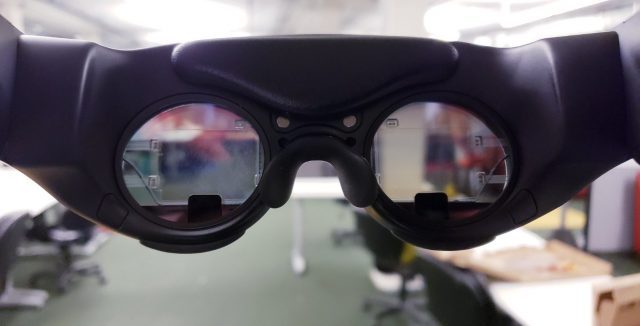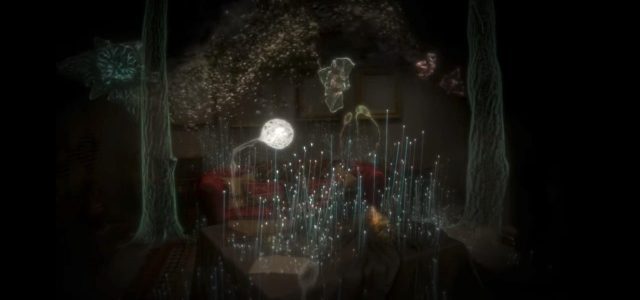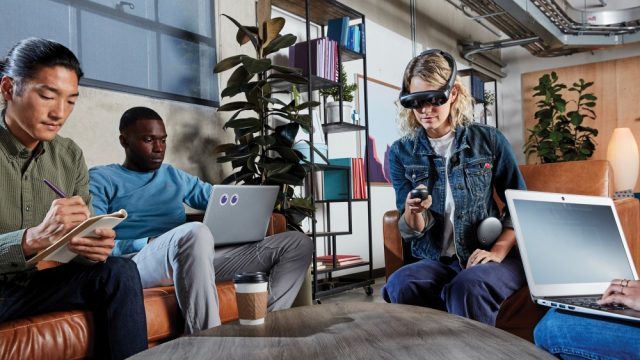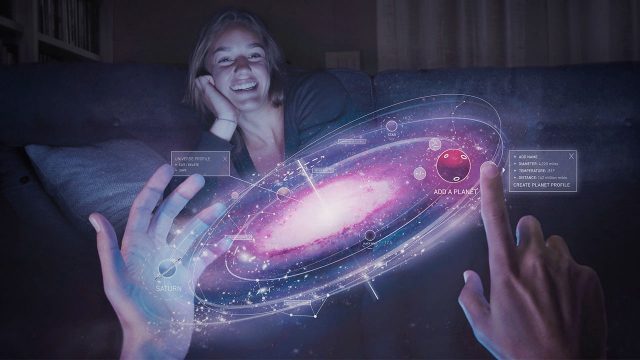Part 5: Helio and the MR Web
Magic Leap One’s WebMR browser Helio is one of its coolest features. Simple yet flexible, Helio (along with the ‘Prismatic’ framework) will allow anyone to create a MR-friendly web-page with just a little bit of Javascript code.
#WebXR folks will find this interesting: #MagicLeap has a WebMR browser named Helio that allows web pages to incorporate MR elements easily.
This is an example from the @nytimes. This is done with a JS library named Prismatic – a little JS, HTML & CSS and you have a MR page. pic.twitter.com/HvjczS8Jcv
— Lucas Rizzotto (@_LucasRizzotto) August 10, 2018
Examples show how navigating the web can be made much more interactive, informative and generally useful through thoughtful 3D elements as MR computers become the norm. See a piece of furniture you want to buy? Just drag it in your living room and you can see how it fits within your space. Want to inspect a location mentioned in a news article? Just get up and walk around it as you read.
According to Magic Leap CEO, Rony Abovitz, there’s no full WebVR support on Helio as of now, but integrations between VR & MR could soon be a possibility.
Also super-keen to enable tunnels and portals between VR and ML worlds. Jedi coders could superhack and do that now in ML – we are working to make that much easier. #Magicverse
— Rony Abovitz (@rabovitz) August 12, 2018
Part 6: The Field-Of-View
Magic Leap One has the best FoV of its class, although it’s still relatively small. But how noticeable is it?
Let me start by saying that I don’t think a large field-of-view is that important in this stage of MR — it’s an engineering problem that’s bound to be solved and it’s simply a matter of time. What I’m much more interested in is what the device is capable of doing in all other areas and how that could change how Mixed Reality experiences are built.
 That being said, Magic Leap was smart in hiding its limitations. The dark parts of the headset cover a lot of your field of view, helping you focus on the center of the display. The darker lenses combined with the hardware-covered up field-of-view actually immerse you a bit like a VR headset would, which I found surprising — when using the headset I immediately became less aware of my surroundings and the people around me.
That being said, Magic Leap was smart in hiding its limitations. The dark parts of the headset cover a lot of your field of view, helping you focus on the center of the display. The darker lenses combined with the hardware-covered up field-of-view actually immerse you a bit like a VR headset would, which I found surprising — when using the headset I immediately became less aware of my surroundings and the people around me.
To further help hide the low field-of-view, many applications have their holograms fade nicely on the edges of the visor and it works very well. Objects were consistently going out of my view in Tónandi but I barely ever noticed them due to this trick and their semi-transparent visual style.
 But not all apps implement this, and the FoV can become more noticeable in apps like Project Create, which allow you to paint with your controller outside the visible area of the display. Overall, the wider FoV is a welcome addition and it’s up to designers to create mechanics that leverage it while also hiding its limitations.
But not all apps implement this, and the FoV can become more noticeable in apps like Project Create, which allow you to paint with your controller outside the visible area of the display. Overall, the wider FoV is a welcome addition and it’s up to designers to create mechanics that leverage it while also hiding its limitations.
Conclusion — Should You Buy This?

If you’re a consumer, this product is probably a few years from being ready for you.
If you’re an enthusiast, you should give it a year so Magic Leap can have time to roll out all of their launch apps and developers can bring life to the store.
But if you’re an experienced creator who’s passionate about MR computing and want to take a part in it while it’s still being written — the Magic Leap One is the cheapest and best all-around mobile MR headset in the market.
It’s not perfect — the device still has a lot of room for improvement and it doesn’t beat old headsets on all accounts. But it tries much more than anyone else, giving developers the strongest set of tools available to re-imagine computing.
 There’s still a lot of unknowns in regards to the future of MR and the role Magic Leap will play in it. It too asks that developers take a leap.
There’s still a lot of unknowns in regards to the future of MR and the role Magic Leap will play in it. It too asks that developers take a leap.
I really hope that they continue to improve on what they’ve built so this can go from being a good devkit to a landmark device. As it stands, the Magic Leap One is rich with technology, but still has flaws and unexplored potential.
I took a leap because I love MR and wanted to find out what that potential was — but it’s up to you to find out if you feel the same way.






